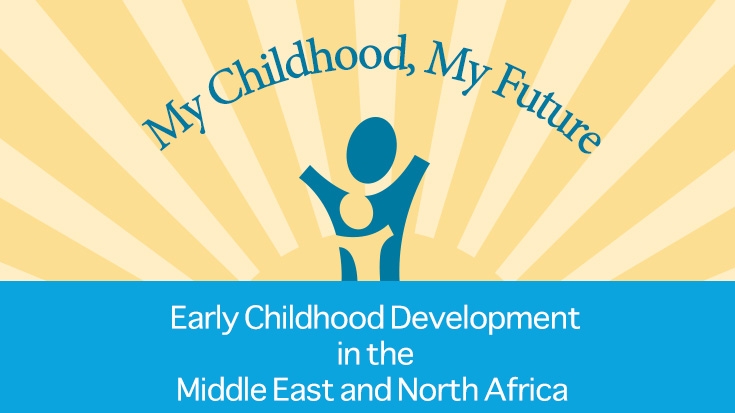The first chapter offers an overview of the evidence that the period from before birth to age five is the most important stage of human development. This period is especially crucial as deficits at this early stage tend to be irreversible and to perpetuate cycles of poverty and inequality. The many dimensions of healthy ECD, from proper healthcare and nutrition to early development activities, are identified along with the range of related indicators used to measure the state of ECD in the region.
Chapter 2 offers a comparison with other regions of the world, for a better understanding of the state of ECD in MENA,. The twelve countries of the region are also compared, to establish benchmarks and identify country-specific deficits in ECD. The chapter includes an analysis of the factors that influence ECD, as there is significant inequality of access to key development activities even in the region’s more developed countries.
Chapter 3 shows that economic growth alone will not address the many shortfalls in the region’s ECD. Targeted interventions are needed. The chapter provides a way forward with a number of approaches from around the world that have been implemented successfully and which would benefit children in MENA.
Chapter 4 offers an overview of ECD in Algeria which has achieved good immunization rates but has high rates of stunting due to malnutrition, and where a child’s social and economic background influences the chances of healthy development.
Chapter 5 offers an overview of ECD in Djibouti where prenatal and delivery care is now almost universal but child mortality rates are still high and less than one third of children are fully immunized by the age of one.
Chapter 6 offers an overview of ECD in Egypt where stunting is a major and persistent problem and disadvantaged children are the least likely to benefit from early schooling, although immunization rates have reached 92%.
Chapter 7 offers an overview of ECD in Iraq where only half of children are receiving regular prenatal care, less than two-thirds are fully immunized and access to key development activities is closely related to social and economic background.
Chapter 8 offers an overview of ECD in Jordan which has achieved near universal coverage for prenatal and neonatal care, and while rates for stunting are low there is large variation in nutrition status, with a child from the poorest segment of society seven times as likely to be stunted as a child from the richest.
Chapter 9 offers an overview of ECD in Lebanon which has also achieved near universal coverage for prenatal and neonatal care but where only half of all children are fully immunized by age one and poorer children are more likely to be stunted.
Chapter 10 offers an overview of ECD in Libya before the current crisis, where 87% of all children were fully immunized but only half had access to iodized salt, essential for cognitive development, and more than one fifth were stunted.
Chapter 11 offers an overview of ECD in Morocco where 90% of children are fully immunized but almost one third are stunted and deaths in the first month and year of life are above regional averages, with the poorest children facing greater risk of death.
Chapter 12 offers an overview of ECD in Syria before the current crisis, where 96% of births were assisted by a skilled attendant but only 78% of one-year-olds were fully immunized and over one quarter of all children were stunted.
Chapter 13 offers an overview of ECD in Tunisia which has achieved near universal prenatal and delivery care and early mortality has fallen below regional averages, but children in rural areas have one third the chance of urban children to attend early education and 22% of children aged 5 are engaged in child labor.
Chapter 14 offers an overview of ECD in the West Bank and Gaza which has achieved near universal coverage for prenatal and delivery care but stunting remains a persistent problem and there are large differences in access to early care and education between advantaged and disadvantaged children.
Chapter 15 offers an overview of ECD in Yemen before the current crisis where less than half of all births received prenatal care and children were more than twice as likely to die before their first birthday (7%) as they were to attend early childhood education (3%).
